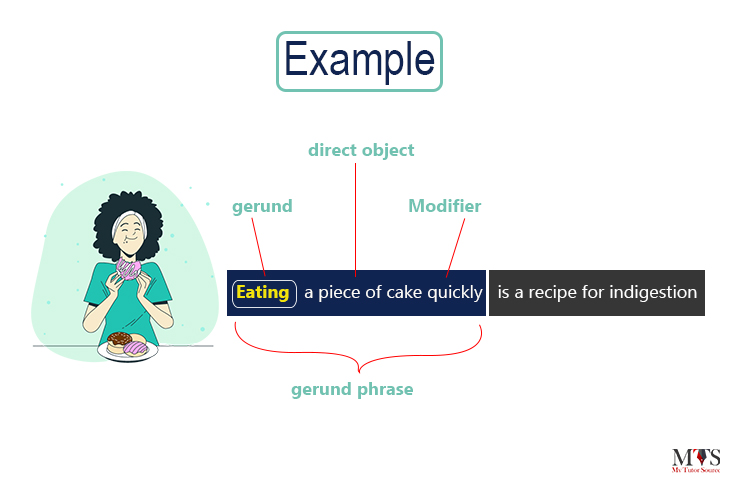

The term ‘gerund’ might sound very foreign and strange, and you might think to yourself ‘what even is that’It might come as a surprise to you, but gerunds are a very common part of your daily life, and whether you realize it or not, you use them every single day.
In this article, we have discussed gerunds, gerund structure, and gerund phrases in-depth. And for your better understanding, we have added a fair share of gerund examples and ing phrases. By the end of this article, you will be able to understand gerund structure and use gerunds in your everyday writing comfortably. So, stick till the end to gain a strong recognition of gerunds:
A gerund is abbreviated using the word ‘ger’ and it is defined as one of the many nonfinite verb forms in different languages and oftentimes, however not exclusively, one of them acts as a noun.
In English, a gerund carries the properties of both noun and verb, such as it is able to take a direct object and has the ability to be modified by an adverb, respectively. The term ‘ing phrases’ or ‘-ing form’ is commonly used in the English language to talk about gerunds specifically. The traditional grammar differentiates between the -ing phrases when used in gerunds and present participles. However, that difference is not followed in the modern types of grammar, including The Cambridge Grammar of the English Language and A Comprehensive Grammar of the English Language.
Moreover, in English grammar the gerund is used to mean an -ing form that is found in non-finite clauses, for instance, playing on computers. This, however, is not common for a Latin gerund. Another difference is that the English clause can act in a sentence as the subject or object, but that is impossible for a Latin gerund to do.
Just like all the things in grammar, gerunds can take a bit of time and some detective skills for you to spot them in a sentence. The problem with identifying gerunds is that present participles also end in -ing. The best way to get familiarized with the way gerunds are used in a sentence is by studying examples. So, let’s get to that!
The sentences given below illustrate the uses of gerund, and also demonstrate how a gerund clause can act as a noun when used in larger sentences:
One surprising aspect of gerunds is that if you use gerunds of the right auxiliary verbs, you can make gerund clauses that show passive voice and perfect aspect:
A gerund phrase is basically a combination of a gerund, which is a verb, and the -ing phrase. The combination then works as an object, a noun with a modifier, or both. That sounds pretty intimidating, right?
Let us simplify it for you.
First of let’s look at a gerund phrase being used in a sentence:
Eating a piece of cake quickly is a recipe for indigestion.
Now, if we break it down, it will look like this:

Here are some good examples for you to fully understand sentences with gerund phrases:
These three sentences perfectly demonstrate the use of gerund phrases in different ways. Moving on:
Gerund clauses can have different types of roles when they are used in a sentence:
| Role of Gerund Clause | Example | |
| A | Subject | Drinking juice is nice. |
| B | Extraposed subject | It can be nice drinking juice. |
| C | Subject Complement | What I am eagerly looking forward to is drinking juice. |
| D | Direct object | I cannot stop drinking juice. |
| E | Prepositional object | I dreamt of drinking juice. |
| F | Adverbial | She walks the streets drinking juice. |
| G | Part of the noun phrase | It is a portrait of a woman drinking juice. |
| H | Part of the adjective phrase | They are all preoccupied with drinking juice. |
| I | Complement of the preposition | He takes great pleasure in drinking juice. |
.
When used in the traditional types of grammar, the term ‘gerund’ is not used when talking about the roles demonstrated in F, G, and H.
Gerunds are not easy to understand, especially because of their uncanny resemblance with present participles. However, when you have to study English at any level or grade, be it introductory English or complex English Literature, you need to be familiar with the use of gerunds, beforehand.
This is the reason we curated our article around students who are still getting used to the gerund and its use in English. Use the examples to understand its uses and types better. Before you even know it, you will be using gerunds in your day-to-day life as an expert!